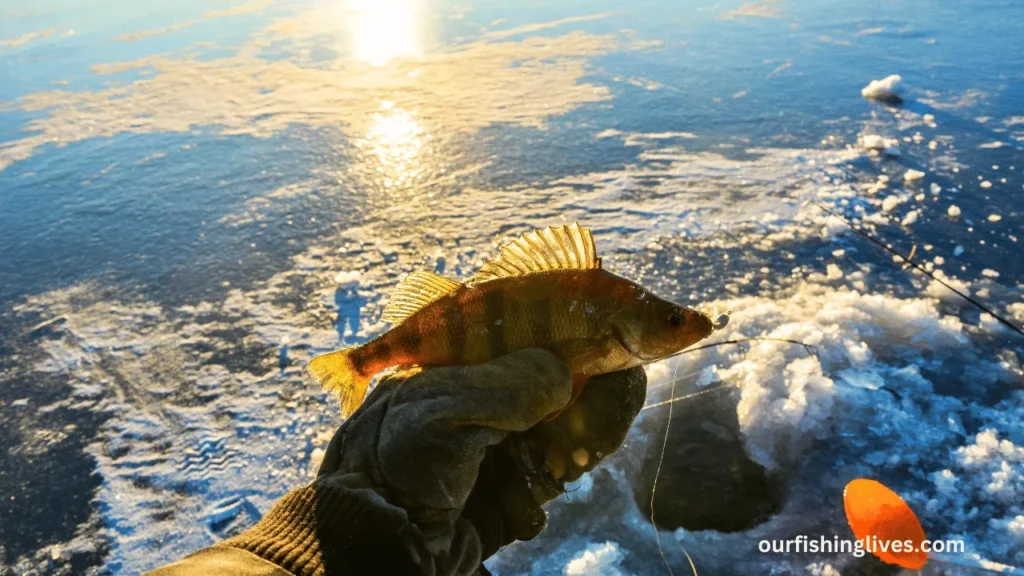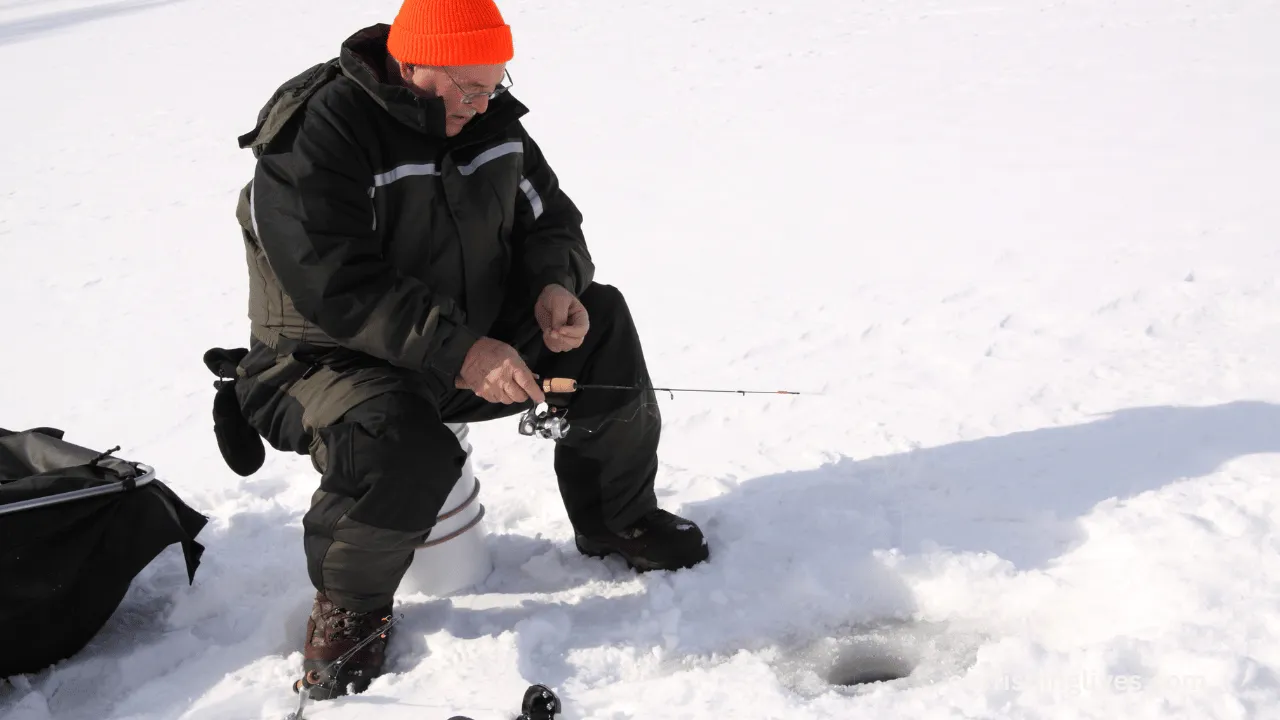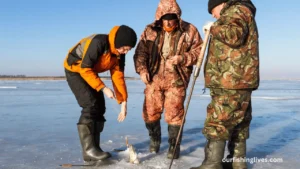Many people who like being outside enjoy ice fishing in the winter. However, before going out onto a frozen body of water to do this activity, it is very important to know how important ice thickness is for safety. Before going ice fishing, you need to know how thick the ice should be to make sure you stay safe and have a good time.
Contents
- 1 Factors Influencing Ice Thickness
- 2 Recommended Ice Thickness for Ice Fishing
- 3 Testing Ice Thickness
- 4 Conclusion
- 5 FAQs
- 5.1 How thick should the ice be for ice fishing?
- 5.2 What factors influence ice thickness?
- 5.3 How can I test the thickness of the ice?
- 5.4 What precautions should I take when venturing onto the ice for ice fishing?
- 5.5 Can I rely solely on the minimum recommended ice thickness for safety?
- 5.6 What should I do if I am uncertain about the ice’s safety for ice fishing?
Factors Influencing Ice Thickness
- Temperature: The primary factor influencing ice thickness is the temperature. Colder temperatures facilitate the freezing of water, leading to thicker ice formation. Consistently low temperatures over an extended period are necessary for ice to reach a safe thickness for ice fishing.
- Body of Water: The size and depth of the body of water also play a significant role in determining ice thickness. Smaller ponds and lakes freeze faster and often have thicker ice compared to larger bodies of water, such as rivers or reservoirs.
- Snow Cover: Snow acts as an insulator, inhibiting the freezing process. Therefore, ice covered by a thick layer of snow may be weaker and less safe for ice fishing.
- Currents and Underwater Springs: Areas with strong currents or underwater springs may have varying ice thickness due to the movement of water, which can weaken the ice.

Recommended Ice Thickness for Ice Fishing
- Minimum Safe Thickness: The general rule of thumb is that ice should be at least 4 inches thick for safe foot traffic. However, this thickness is usually considered safe for a single person, and additional precautions should be taken for larger groups.
- Safe Thickness for Small Vehicles: If you plan to drive a small vehicle, such as a snowmobile or ATV, onto the ice, the ice should be at least 5-7 inches thick.
- Safe Thickness for Cars and Trucks: For larger vehicles like cars and trucks, the ice should be a minimum of 8-12 inches thick to support their weight safely.
- Extreme Caution: It is essential to exercise extreme caution when venturing onto the ice, especially early in the season or after periods of thaw when the ice may be weaker.
Testing Ice Thickness
- Use an Ice Auger: An ice auger is a tool designed for drilling holes in the ice. Use an ice auger to drill test holes at regular intervals to measure the thickness of the ice as you move further onto the frozen water body.
- Check Ice Color: Clear blue ice is generally stronger and safer than white or opaque ice, which may indicate the presence of air bubbles and weaker structure.
- Consult Local Authorities: Local fishing regulations and authorities often provide guidelines and recommendations for safe ice thickness in specific regions. It is advisable to seek information from local experts before ice fishing.
Conclusion
It is very important to know the right thickness of ice for ice fishing to keep yourself and others safe. Before going out on the ice, you can make smart choices by thinking about things like the temperature, the body of water, and checking the ice’s thickness. When doing winter hobbies like ice fishing, remember that safety should always come first. Learn what you’re doing, be careful, and have a fun and safe time ice fishing.
FAQs
How thick should the ice be for ice fishing?
The minimum recommended ice thickness for safe foot traffic is 4 inches. However, thicker ice is required for larger groups, vehicles, or specific activities, such as snowmobiling or driving a car onto the ice.
What factors influence ice thickness?
Several factors influence ice thickness, including temperature, body of water, snow cover, and the presence of currents or underwater springs. Consistently low temperatures and relatively calm bodies of water contribute to the formation of thicker ice.
How can I test the thickness of the ice?
Ice thickness can be tested by using an ice auger to drill test holes at regular intervals and measure the ice’s thickness as you venture further onto the frozen water body. Additionally, the color of the ice can provide an indication of its strength, with clear blue ice generally being stronger than white or opaque ice.
What precautions should I take when venturing onto the ice for ice fishing?
It is essential to exercise caution, especially early in the season or after periods of thaw when the ice may be weaker. Additionally, it is advisable to consult local authorities for guidelines and recommendations specific to the region you plan to ice fish in.
Can I rely solely on the minimum recommended ice thickness for safety?
While the minimum recommended ice thickness provides a general guideline, it is crucial to assess the ice’s quality and other environmental factors, such as snow cover and recent weather conditions, to ensure safe ice fishing.
What should I do if I am uncertain about the ice’s safety for ice fishing?
If you are uncertain about the ice’s safety, it is best to err on the side of caution and refrain from venturing onto the ice for ice fishing until you can obtain reliable information about the ice’s thickness and quality from local experts or authorities.








